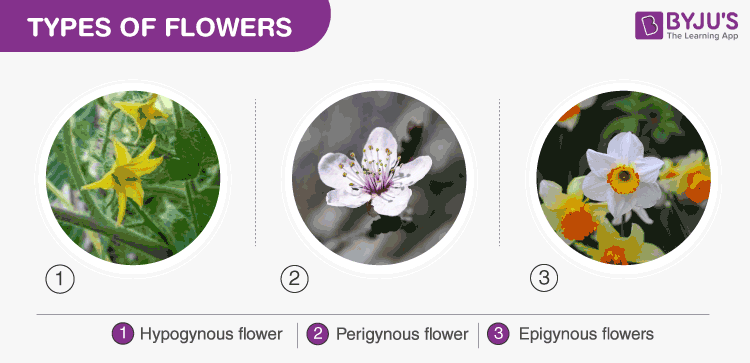Inflorescence Definition
“Inflorescence is the arrangement of flowers on the floral axis.”

What is Inflorescence?
A flower is a significant part of a plant tailored for reproduction. In addition, it is an essential part of the bouquet, decorations, celebrations, garden, rituals, etc. Among different parts of a plant, the flower is the most attractive part due to its beauty and fragrance.
Let’s learn more about inflorescence and different types of inflorescence.
Also Read: Morphology of Flowering Plants
Recommended Video:

Types of Inflorescence
In a plant, flowers may grow either as a single flower or as a group. The inflorescence is defined as the arrangement of a cluster of flowers on a floral axis. The inflorescence is of two types, they are: Racemose and Cymose

Types of inflorescence
Racemose Inflorescence
In this type of inflorescence, the flowers branch laterally on the floral axis. Here the floral axis keeps on growing and the flowers develop in an acropetal pattern.
Cymose Inflorescence
In this type of inflorescence, the flower is the terminating point of each floral axis. In Cymose inflorescence, flowers follow the basipetal pattern of growth.
Compound Inflorescence
The main axis branches once or twice in a racemose or cymose manner.
Cyathium
It contains a cup-shaped involucre provided with nectar-secreting glands. A female flower is enclosed within the involucre. A number of male flowers surround the female flowers.
Verticillaster
It is a condensed form of a dichasial cyme with a cluster of sessile and sub-sessile flowers.
Hypanthodium
The receptacle forms a hollow cavity and has an apical opening protected by scales.
Types of Flowers
As we know, a flower constitutes the reproductive system of a plant. As the reproductive part, it ensures the continuance of a species of plant by the process called reproduction.
A flower is composed of two accessory organs, calyx and corolla and of reproductive organs, androecium and gynoecium. All four whorls are arranged on a stalk called receptacle (thalamus).
Flower can be categorized into many groups based on the number and arrangement of whorls, symmetry, floral appendages, etc. Based on the number of whorls, a flower can be unisexual or bisexual. A unisexual flower consists of the calyx, corolla, and androecium or gynoecium but in a bisexual flower, all the four whorls are present.
A flower can be classified as hypogynous, perigynous or epigynous depending on the position of three whorls- calyx, corolla, and androecium with respect to the ovary on the receptacle.

Hypogynous
In a Hypogynous flower, the ovary is superior to the other three whorls. Here the ovary is positioned high on the thalamus and other parts are below it, e.g., tomato, tulip, brinjal, etc.
Perigynous
In perigynous flower, the ovary is in the centre and all four whorls are almost at the same level. Here, the ovary is half superior/ inferior, e.g., rose, peach, cherry, etc.
Epigynous
In epigynous flowers, the ovary is inferior to the other three parts. Here, the thalamus encloses the ovary inside it and the other three whorls are located above this, e.g., daffodil, cucumber, etc.
Also Read: Parts of a Flower
To know more about inflorescence, and different types of inflorescence, keep visiting BYJU’S website or download BYJU’S app for further reference.
Frequently Asked Questions
What is the difference between inflorescence and flower?
Flower is a modified shoot that serves as the reproductive organ of a plant whereas inflorescence is a group of flowers arranged on a floral axis.
A group of flowers is called?
A group or cluster of flowers is known as inflorescence.

Comments